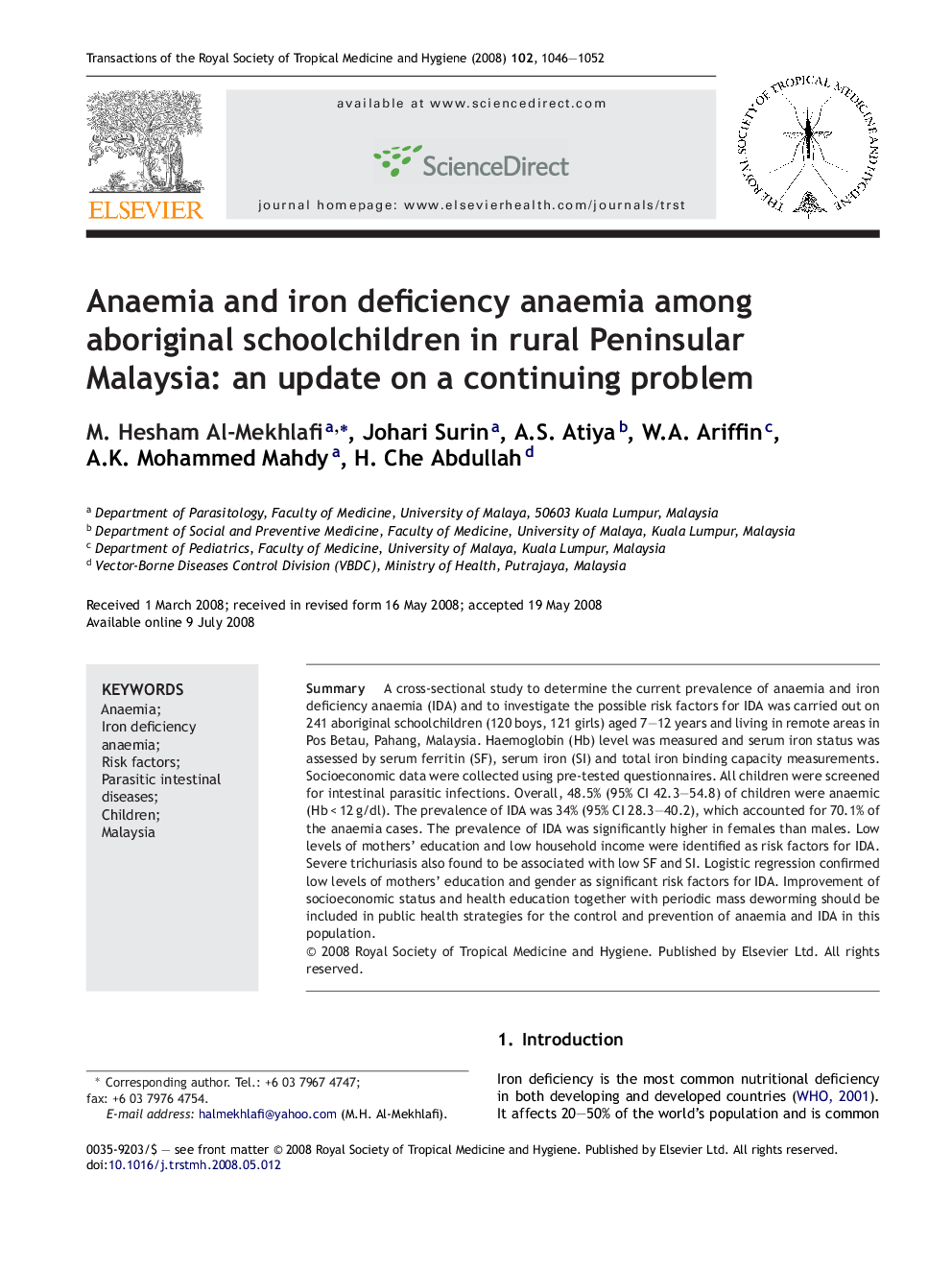| Article ID | Journal | Published Year | Pages | File Type |
|---|---|---|---|---|
| 3420729 | Transactions of the Royal Society of Tropical Medicine and Hygiene | 2008 | 7 Pages |
SummaryA cross-sectional study to determine the current prevalence of anaemia and iron deficiency anaemia (IDA) and to investigate the possible risk factors for IDA was carried out on 241 aboriginal schoolchildren (120 boys, 121 girls) aged 7–12 years and living in remote areas in Pos Betau, Pahang, Malaysia. Haemoglobin (Hb) level was measured and serum iron status was assessed by serum ferritin (SF), serum iron (SI) and total iron binding capacity measurements. Socioeconomic data were collected using pre-tested questionnaires. All children were screened for intestinal parasitic infections. Overall, 48.5% (95% CI 42.3–54.8) of children were anaemic (Hb < 12 g/dl). The prevalence of IDA was 34% (95% CI 28.3–40.2), which accounted for 70.1% of the anaemia cases. The prevalence of IDA was significantly higher in females than males. Low levels of mothers’ education and low household income were identified as risk factors for IDA. Severe trichuriasis also found to be associated with low SF and SI. Logistic regression confirmed low levels of mothers’ education and gender as significant risk factors for IDA. Improvement of socioeconomic status and health education together with periodic mass deworming should be included in public health strategies for the control and prevention of anaemia and IDA in this population.
